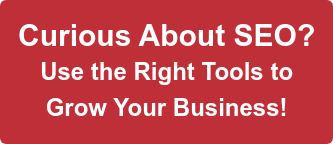Unlock SEO success: Learn how we use HubSpot Content Hub for SEO, boost rankings, increase organic traffic, and optimize our content for success.
Search Intent and SEO - How To Get it Right
Ever feel like you're giving search engines the silent treatment? You meticulously craft content and optimize every detail, yet your website languishes in the search abyss. The culprit? Misunderstood search intent.

What is Search Intent?
Search intent, also known as user intent, refers to the specific goal or purpose behind a user's online search. It's the science behind understanding why someone types a particular query into a search engine. Recognizing and interpreting search intent is fundamental to crafting content that directly addresses the needs and expectations of users. It'll help to improve organic click-through rates and will increase traffic and lead conversions.
When businesses align their web content with the intent behind user queries, it creates a symbiotic relationship. Search engines, in turn, reward this alignment by ranking the content higher in search results. This connection ensures users find the most relevant information or solutions swiftly, contributing to an enhanced online experience.
The Impact of Search Intent on SEO
With their ever-evolving algorithms, search engines have become adept at deciphering user intent. Through sophisticated analysis, search engines evaluate search queries' context, language nuances, and semantics. This allows them to discern the underlying purpose behind each search, categorizing them into different intent types such as informational, navigational, transactional, or commercial investigation. By comprehending user intent, search engines aim to deliver the most relevant and valuable results, enhancing the overall user experience.
Websites with strong alignment between page content and search intent achieve an average of 18% higher ranking in search results compared to those without a clear intent focus.
Relevance is what connects search intent with higher search engine rankings. When businesses align their content with the intent behind user queries, search engines interpret this alignment as a signal of quality and value. Content that precisely addresses user intent is more likely to be deemed valuable by search algorithms, resulting in improved rankings on search engine results pages (SERPs). This connection is the cornerstone of effective SEO – the more relevant and purposeful the content, the higher the likelihood of visibility and prominence in search results.
Different Types of Search Intent
Understanding search intent involves categorizing queries into distinct types, each serving a unique purpose. These primary categories are:
-
Informational intent: Users seek information or answers to specific questions. Crafting content that educates and informs is crucial for satisfying this intent.
-
Navigational intent: Users are looking for a particular website or webpage. Optimizing for navigational intent involves ensuring easy navigation and providing clear paths for users to reach their destination.
-
Transactional intent: Users are ready to purchase or complete a specific action. Tailoring content to guide users through the transaction process is key for businesses with e-commerce platforms or specific conversion goals.
-
Commercial intent: Users are in the research phase, comparing products or services before deciding. Content for commercial investigation intent should highlight key differentiators and provide valuable insights to influence the decision-making process.
Recognizing these intent types allows businesses to create targeted content that resonates with the user's objective. For instance, a blog post may cater to informational intent, a well-optimized landing page for transactional intent, or a comprehensive product comparison guide for commercial investigation intent.
While it can be tempting to try and cater to all types of user intent at once, it's not recommended. While diversity in content is crucial, spreading resources too thin across diverse intent types poses several challenges.
Firstly, each intent type demands a unique content approach. Informational content requires depth and clarity, navigational content needs seamless user experiences, transactional content demands persuasive calls-to-action, and commercial investigation content requires thorough comparisons. Juggling all these simultaneously can dilute the quality and relevance of the content produced.
Secondly, the risk of providing a subpar user experience is significant. Users arriving at a webpage with conflicting informational, transactional, and navigational intent signals may find it confusing and disorienting. This confusion could lead to higher bounce rates, lower engagement, and ultimately, a negative impact on the website's overall performance.
Furthermore, search engines may struggle to identify a website's primary focus when confronted with a mishmash of content catering to various intent types. This lack of clarity can hinder the website's rankings, as search engines might find it challenging to determine the most relevant content for specific user queries.
Lastly, the resources invested to cover all intent types might not yield optimal returns. Focusing on the intent types most aligned with the business's goals and target audience ensures a more efficient allocation of resources, maximizing the impact of the SEO strategy.
Identifying Search Intent
Identifying search intent is critical to developing a targeted and successful SEO strategy. Businesses can employ a multi-faceted approach, utilizing various tools and metrics to gain insights into user queries and preferences.
Use Keyword Research to Understand User Queries
Keyword research tools serve as invaluable assets in unraveling the intricacies of user intent. Businesses can discern patterns and trends indicative of specific intent types by analyzing the keywords users commonly input. These tools reveal users' language and provide data on search volume, competition, and related queries. For instance, tools like Google Keyword Planner, SEMrush, and Ahrefs empower businesses to identify high-performing keywords relevant to their industry and audience, guiding content creation that aligns seamlessly with user intent.
Analyze SERP Features for Clues on Search Intent
The Search Engine Results Pages (SERPs) are rich information sources for decoding search intent. Examining the features accompanying top-ranking results reveals what users expect when entering a particular query. For instance, if most results include informative blog posts, it suggests informational intent. If product pages dominate the SERP, it signals transactional intent. Identifying these patterns aids businesses in tailoring their content to match the predominant intent type for a given keyword. Elements like featured snippets, knowledge graphs, and image carousels can further refine the understanding of user expectations, providing a roadmap for content development.
Determine Intent with User Engagement Metrics
User engagement metrics are crucial in deciphering search intent and provide real-time feedback on how users interact with a website's content. Metrics like bounce rate, time on page, and click-through rate offer insights into whether users find the content aligned with their intent. High bounce rates may indicate a mismatch between user expectations and content, while extended time on the page signals engagement and relevance. Additionally, analyzing user pathways through a website can reveal the user journey, helping businesses identify the stages where users exhibit different intents—information gathering, navigation, or making a transaction.
You might also like:
Creating Content Aligned with Search Intent
Once you have a solid understanding of search intent, the next step is to create content that resonates with users, meets their expectations, and aligns seamlessly with search intent.
1. Compelling Meta Titles and Descriptions
Meta titles and descriptions will be the first thing that users see when scrolling through search results, making them crucial in converting the relevance of your content. Crafting compelling meta titles involves incorporating high-impact keywords associated with the identified search intent. This enhances the page's visibility in search results and provides users with a clear indication that the content addresses their needs.
Descriptions should succinctly summarize the content, enticing users to click through by promising valuable information or solutions related to their query. This will create a positive user experience and encourage click-throughs, aligning user expectations with the actual content.
2. Optimized Content
Optimizing content involves a nuanced understanding of the intent type and tailoring the material accordingly.
Informational Intent
When users search for information, crafting in-depth and authoritative content is paramount. Comprehensive guides, how-to articles, and informative blog posts are essential for addressing informational intent. The content should answer common questions, provide insights, and offer valuable knowledge. Incorporating relevant keywords naturally into the content helps search engines understand its relevance. Visual elements such as infographics or charts can also enhance the accessibility and engagement of informational content.
For instance, a healthcare website catering to informational intent might produce articles on symptoms, treatment options, or preventive measures for specific medical conditions. The website becomes a go-to resource for users seeking insights and guidance by providing valuable information.
Navigational Intent
Navigational intent implies that users are seeking a specific website or page. To cater to this intent, businesses must prioritize user experience and ease of navigation. Clear and intuitive website structures, prominently placed calls-to-action, and a user-friendly interface become critical. Providing a well-designed site map or a robust internal search functionality ensures users swiftly find the information they're looking for.
An example could be an e-commerce platform optimizing for navigational intent by featuring a user-friendly homepage, a prominent search bar, and intuitive category navigation. This streamlines the user's journey, facilitating efficient navigation to desired products or services.
Transactional and Commercial Intent
When users exhibit transactional intent, signaling an intention to purchase or take a specific action, the content strategy shifts toward conversion optimization. Clear and compelling calls-to-action, persuasive product descriptions, and a streamlined checkout process become focal points. For commercial investigation intent, content should emphasize product comparisons, reviews, and expert insights to aid users in making informed decisions.
For example, an online retailer targeting transactional intent may employ strategic product placements, limited-time offers, and a hassle-free checkout process. A website catering to commercial investigation intent might feature comprehensive product comparison guides, customer testimonials, and expert reviews, fostering confidence and aiding users in decision-making.
By aligning content with user expectations, businesses create a seamless experience, reinforcing their expertise and reliability in the eyes of both users and search engines.
3. User-friendly and Informative Content
User-friendly and informative content is the bedrock of a successful SEO strategy. The content should be structured logically, with headings, subheadings, and bullet points, making it easily scannable for users seeking specific information. A pleasing visual layout enhances user experience and encourages prolonged engagement.
Additionally, informative content that genuinely adds value to users positions the website as an authoritative source in the industry, contributing to higher search engine rankings. Regularly updated and relevant content keeps users returning and signals to search engines that the website is a dynamic and trustworthy resource.
Creating content aligned with search intent is not a one-size-fits-all endeavor. It requires a nuanced approach that caters to the specific needs of users based on their intent.
Mastering Search Intent for Lasting SEO Success
Mastering the science behind search intent is necessary for businesses looking to grow their online presence and accelerate organic growth. From understanding the diverse intent types to crafting content that precisely aligns with user expectations, businesses can elevate their SEO strategies to new heights.
As businesses prioritize user-friendly, informative content and strategically address different intent types, they enhance their online visibility and foster meaningful connections with their audience, ultimately propelling their success in the dynamic digital landscape.
This content is also available in:
- Deutsch: Suchintention und SEO - wie man es richtig macht
- Español: Intención de búsqueda y SEO: cómo hacerlo bien
- Français: L'intention de recherche et le référencement - Comment y parvenir ?
- Italiano: Intento di ricerca e SEO: come farlo correttamente
- Română: Intenția de căutare și SEO - Cum să o faci corect
- 简体中文: 搜索意图和搜索引擎优化--如何做到正确无误










Leave a Comment